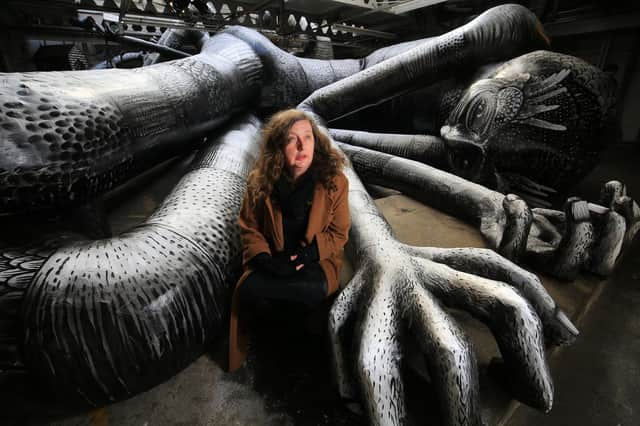'Culture, art and heritage is integral to Sheffield's prosperity - it is not just for Christmas'


Combining the economic analysis of Chamberlain Walker, the authors of the report, and with data collected by the research team in the University, the conclusions were devastating.
A sixty per cent decline in output, gross value added, due to social distancing rules and lockdowns was recorded over the past 18 months. Some industries, museums and performing arts in particular, lost over 70 per cent of their income.
Advertisement
Hide AdAdvertisement
Hide AdThe Cultural Recovery Fund has been for many organisations a crucial intervention that gave organisations in Barnsley, Rotherham, Doncaster and Sheffield the chance to survive.
Despite that the fact is South Yorkshire received the second lowest allocation per head amongst our comparable regions with £13.56 per head of population with a comparable region, Northumberland and Tyne and Wear, receiving £20.44 per head. And there have been no very large grants or loans (above £5m) in South Yorkshire. So, the very recent announcement of round three funding to Sheffield Theatres and Theatre Deli in Sheffield, amongst others, is a glimmer of light.
The report also revealed the cultural and heritage sectors had the highest numbers of jobs furloughed, with freelancers in particular suffering. Those figures however do not reveal the true emotional impact and severity on those who are part of the creative sectors with freelancers across South Yorkshire in particular being part of the forgotten workforce.
The researchers from the Department of Music and Urban Planning tracked a cross section of venues, freelancers and audience members over 12 months to capture the impact in real time. The freelancers who took part revealed how lockdowns and restrictions profoundly impacted their economic circumstances and personal wellbeing with many losing jobs or careers that they had built up over years. Others reported falling between the gaps of sector funding.
Advertisement
Hide AdAdvertisement
Hide AdSouth Yorkshire freelancers contribute to the vibrancy of arts and culture and also take their skills to other cultural events in the UK, internationally and in the digital realm. Work reduced “dramatically” for large proportions of respondents working in music and dance, especially for event crew, lighting and sound engineers.
But green shoots of recovery are all around us, it may appear. Clubs can open again, theatres can offer performances in front of capacity audiences and Christmas is coming so we will all be going out. So freelancers who made up at least 25 per cent of these organisations can come back to an eager leisure-seeking public. But that is not the case as many have left the industry to retrain or found their income substantially reduced as the organisations who once employed them are also feeling the consequences of the pandemic. Audiences have failed to return in the numbers enjoyed pre-pandemic.
So what is needed in order to bring our cultural sector back stronger, more resilient and as necessary as it undoubtedly is in economic, societal, educational terms?
Culture permeates our everyday lives. It is not just a trip to the theatre and a visit to a museum.
Advertisement
Hide AdAdvertisement
Hide AdIt is also enjoying a book, dancing in a club with friends, watching a gig in a small independent venue, purchasing a print or a piece of art at a craft fair or gallery. It forms both the backdrop and the centre stage for many of the stories in our lives.
Our freelancers are the life and soul of all of this and we need to ensure barriers to entry are no longer restrictive to those from disadvantaged backgrounds. That training and skills development are inherent and part of the business support other industries are offered as we slowly get back on our feet. That when our local authorities have hard decisions to make about future priorities that they do not judge it solely on a spread sheet or voting polls but on its true potential for development, impact and growth.
The Chamberlain Walker report reiterates that culture, art and heritage are not separate from other industries and hold a special place in our lives and the future prosperity of South Yorkshire. They are not just for Christmas.